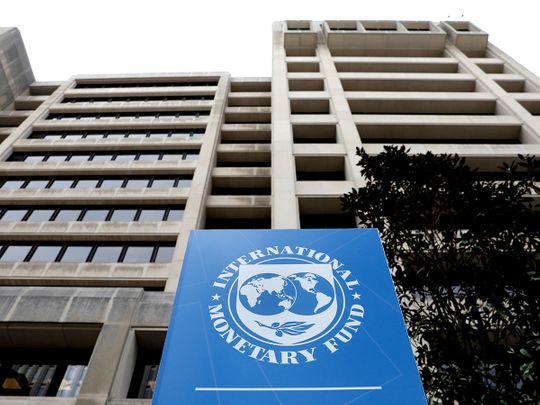
Colombo: When Sri Lankan officials arrive in Washington this week to meet with the International Monetary Fund amid an economic and political crisis, the main question they'll need to answer is how the country plans to manage its billions in debt.
Sri Lanka is seeking up to $4 billion this year to help it import essentials and pay creditors. To get any of that through the IMF's various programmes, the government must present a sustainable debt programme. That's a standard requirement for aid from the so-called lender of last resort, even if a shortage of food, fuel and medicine is pushing the country toward a humanitarian crisis.
The downward economic spiral - dwindling foreign reserves and soaring inflation - has triggered political unrest in Colombo. The local stock exchange announced it would shut this week amid the uncertainty.
The outlook makes a default inevitable, as acknowledged by S&P Global last week when it downgraded Sri Lanka's credit rating and warned of another cut if the nation misses coupon payments. Meanwhile, investors are trying to figure out how much they might recover on $12.6 billion of foreign bonds, and if there's even profit to be made.
The country's dollar bond due July 2022 indicated 5.2 cents higher on Monday to trade at 46 cents on the dollar, after a sharp drop Friday. Here are some IMF funding options in play as talks are due to start this week.
Emergency assistance
IMF members can access one-off emergency loans, with few conditions, through the lender's Rapid Credit Facility and Rapid Financing Instrument. However, this payout is capped at 50 per cent of a state's quota for a year, which in Sri Lanka's case works out to $395 million - or 289 million in special drawing rights, the IMF's unit of account. The nation has declared that it will prioritize payments for food and fuel imports over debt servicing.
Even for that, Colombo needs to take steps toward restructuring its debt, which the IMF staff last month determined was unsustainable.
"When the IMF determines that a country's debt is not sustainable, the country needs to take steps to restore debt sustainability prior to IMF lending," Masahiro Nozaki, the IMF's mission chief for Sri Lanka, said. "Thus, approval of an IMF-supported program for Sri Lanka would require adequate assurances that debt sustainability will be restored."
Meeting that criteria could include even initial steps like hiring advisers, which the government is pursuing. The administration set a deadline for applications from financial and legal advisers, extending its original date by a week. That makes Finance Minister Ali Sabry's stated goal of securing emergency funds as early as a week after negotiations start look optimistic.
Stand-by arrangement
Given Sri Lanka has a $1 billion bond maturing in July and more repayments over the course of 2022, it will probably need access to the IMF's Stand-By Arrangement. Termed as its ‘workhorse’ instrument, Sri Lanka would be eligible for a loan of as much as 435 per cent of its quota - roughly $3.4 billion, net of repayments - for up to 36 months.
The payout can be front-loaded if the need is dire, but is contingent upon the borrower agreeing to conditions such as specific revenue and deficit targets.
Central bank Governor Nandalal Weerasinghe said last week that it was too early to estimate a value of the lending that Sri Lanka could get from the IMF or to confirm the type of programme that the lender could agree to.
While he said that an Extended Fund Facility - which allows longer repayment periods - may be best suited to the country, it typically requires deeper structural reforms. Sri Lanka had that facility approved in 2016, and a Stand-By Arrangement before it during the financial crisis of 2009.
Weerasinghe noted that Sri Lanka in the 2009 loan was approved for access to 400 per cent of its quota.
"I do not see why we cannot get at least that amount," he said. "Now the financial gap is much much higher."










